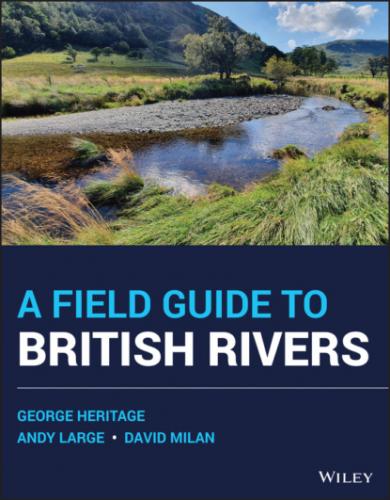A Field Guide to British Rivers. George Heritage
Table of Contents
1 Cover
5 Foreword
6 1 British Rivers 1.1 Introduction 1.2 The Importance of River and Floodplains 1.3 River and Floodplain Degradation 1.4 River and Floodplain Recovery 1.5 Purpose of This Book
7 2 River Types: A Brief Overview 2.1 Introduction 2.2 Classification 2.3 Functional Classifications 2.4 River Classification Framework Used in This Book
8 3 River Types: Observations and Theory 3.1 Diffuse Upland Channels 3.2 Bedrock Channels: Background Research 3.3 Bedrock Influenced Channels: Step‐Pool Channel 3.4 Pool‐Rapid Channels 3.5 Wandering Channels 3.6 Coarse‐Sediment Anabrancing Channels 3.7 Fine‐Sediment Anastomosed Channels 3.8 Active Single‐Thread Channels 3.9 Passive Single‐Thread (Varied Sinuosity)
9 4 “Reading” Rivers 4.1 Morphologic Unit‐Based Process Indicators
10 5 Towards Sensitive And Appropriate Management 5.1 Historic and Current River and Floodplain Alteration 5.2 Extent of Channel Change 5.3 Towards the Future
11 References
List of Tables
1 Chapter 2Table 2.1 River types identified by Montgomery and Buffington (1997) along w...Table 2.2 Additional river types to those listed in Table 2.1, with channel ...Table 2.3 Functional channel types defined by SEPA (2012).Table 2.4 General character of functional channel types as defined by SEPA (...Table 2.5 Basic character and processes operating in the channel types used ...Table 2.6 Typical in‐channel morphologic assemblages by river type.Table 2.7 Typical valley bottom morphologic assemblages by river type.
2 Chapter 4Table 4.1 Key temperate river process indicators.Table 4.2 Feature‐process indicators occurring over different timescales on...
3 Chapter 5Table 5.1 Occurrence of habitat types on 555 English rivers.
List of Illustrations
1 Chapter 1Figure 1.1 Water Framework Directive status summary for UK Rivers (2008–2015...Figure 1.2 Cause of hydromorphic degradation in the UK.Figure 1.3 Typical heavily modified lowland system with artificial flood pro...Figure 1.4 Typical heavily modified upland system, straightened, walled, and...Figure 1.5 Semi‐natural multi‐channel network on the River Narr.Figure 1.6 Laterally migrating active channel on the River Mallart, Syre, no...Figure 1.7 Active reach of the River Glen at Kirknewton, Northumberland, sho...Figure 1.8 Wandering reach of the River South Esk, Scotland, showing sedimen...
2 Chapter 2Figure 2.1 River types on the sediment supply continuum.Figure 2.2 Channel type change with river gradient, sedimentology, and disch...Figure 2.3 The River Styles typologyFigure 2.4 The Extended River typologyFigure 2.5 Temperate river typology used in this volume.
3 Chapter 3Figure 3.1 Continuum of potential change routes and feedback controls for ri...Figure 3.2 Stream head, Thinhope Burn, South Tyne, UK.Figure 3.3 Subsurface hydrology in the headwaters of Thinhope Burn catchment...Figure 3.4 Relationships between catchment areas and local channel head slop...Figure 3.5 Moorland seepage zone on the Lagrae Burn, a tributary of the Rive...Figure 3.6 Bedrock step on the upper River Wharfe, Buckden, North Yorkshire....Figure 3.7 Boulder step reach of the Church Beck, above Coniston, Lake Distr...Figure 3.8 Bedrock pool reach on the Brockle Beck, which flows into Derwentw...Figure 3.9 Overland flow channel, Stonethwaite Beck, Borrowdale, Lake Distri...Figure 3.10 The bedrock channel
